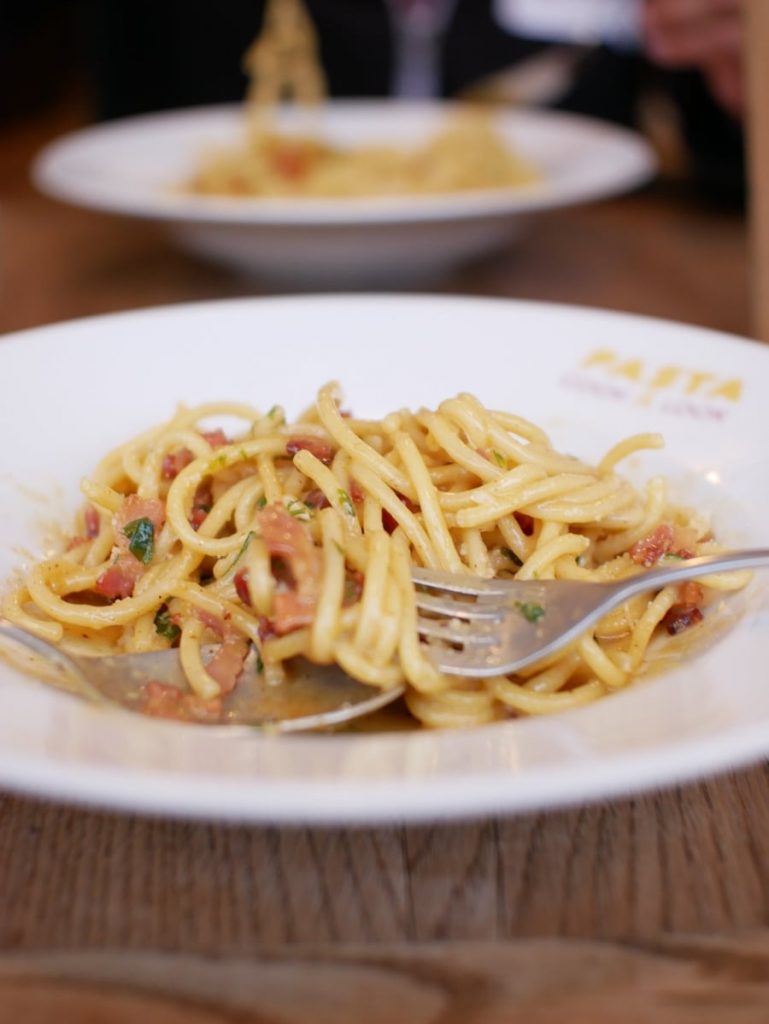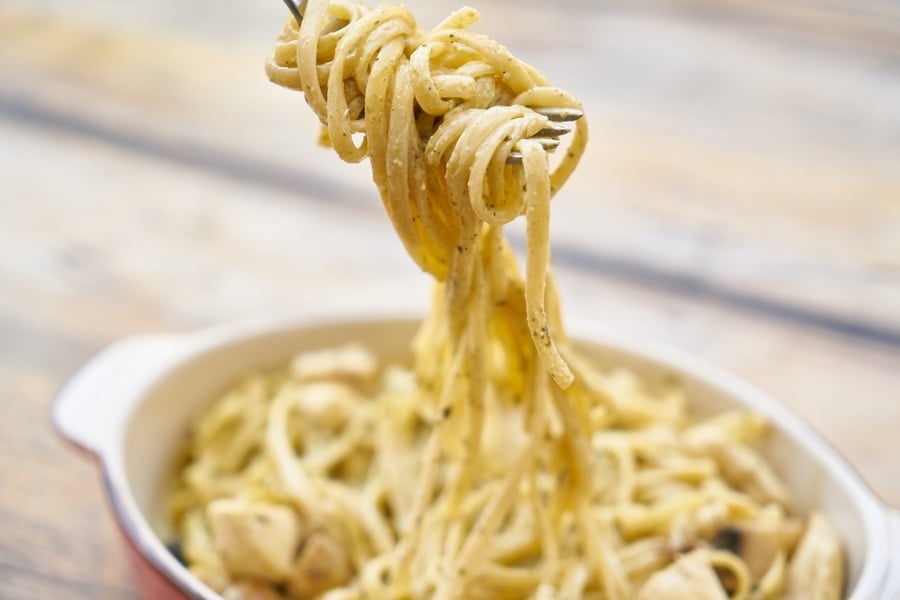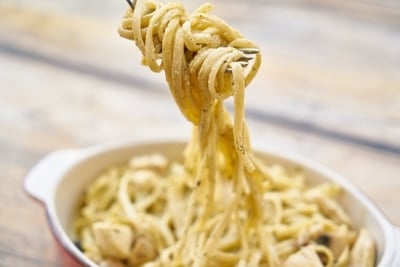Table of Contents
For decades, immersed in studying, working, learning, and teaching in the craft of meat curing, now sharing his passion with you through eat cured meat online resource.
So many different types of cured meats can be used for Carbonara, over the years I’ve tried many. But, I still always go back to the classic! After buying the cured meats for years, I decided one day to do it myself.
I’ve been curing meats for 20 years and want to share some insights.
Carbonara is an iconic Italian pasta dish that traditionally contains egg, cured meat, hard Italian cheese, and cracked black pepper. Many kinds of cured meat can be used to make carbonara, but the quality and type of cured meat you use make a huge difference in the final flavor.
The cured meat traditionally used to make carbonara is guanciale or cured pork jowl. Carbonara can also be made with pancetta or smoked bacon (lardon) if guanciale is unavailable. High-quality cheeses, pork, and eggs are important for a good carbonara.
What Cured Meat Options for Carborna
Carbonara is one of the easier Italian pasta dishes you can make, but having the right cured meat is key to a good result. Read on to learn more about the types of cured meat used for making carbonara.

Like so much classic Italian food, keeping it simple with quality ingredients is the key to success!
Guanciale Is the Best Cured Meat for Carbonara
If you’re looking for the best and most authentic cured meat for making carbonara, you need to pick up a piece of guanciale. This fatty cut of pork comes from the outermost cheek meat of the pig and has a succulent, savory flavor.
Many Italians believe the fat from the jowl, is the best fat on the pig (quality pig that is).
The Jowl fat is also the classic addition to the original Mortadella encrusted with chunks of this hard fat.
Guanciale is traditionally served unsmoked, but a smoked version of this pork cheek can be found in Rome and its surrounding countryside.
The advantage of using guanciale in cooking is that this fatty meat practically melts in a hot cooking pan, making it a flavorful replacement for cooking oil.
Guanciale is mostly used as a flavor enhancer for pasta sauces and pasta dishes rather than being eaten on its own.
Alternative Cured Meats Used in Carbonara
Guanciale isn’t the only cured meat that is used in making carbonara pasta. There are a few other types of meat that can serve as a good substitute if good guanciale is hard to find. Here are some of the other cured meats you can use in a carbonara:
- Pancetta: Pancetta is a type of cured pork belly that is typically shaved thin to be wrapped around meat and vegetables. Pancetta can also be found cubed as a substitute for guanciale. Unlike some other types of cured pork, pancetta is not smoked.
- Pancetta affumicata: Pancetta affumicata is pancetta that has been smoked. Pancetta has a more dominant, smokier flavor than unsmoked pancetta, and results in a stronger-tasting dish.
- Smoked bacon: If guanciale and pancetta aren’t available, dry-cured cold-smoked bacon is the next best option. It can be used to the same flavor-enhancing effect in carbonara as other cured pork cuts. Smoked bacon is a popular substitute in carbonara recipes outside of Italy where access to quality cured pork is less common.
The smoke flavor is not classic, but of course, it can add another complexity to it, the variations in smoke flavor are many!
If none of these cured meats are available, deli ham can be chopped up and incorporated into carbonara as a low-budget version. I do not condone this, but these are options.
However, this version of pasta carbonara will not have the same richness and authentic flavor as carbonara made with the traditional ingredients of Pecorino and guanciale.

Cured Meat Qualities That Make Good Carbonara
Cured pork from fatty cuts of the pig is the main type of cured meat that you’ll typically find in a carbonara. This usually includes cuts from the jowl or belly. These cuts of cured meat are better than others for carbonara for a few reasons:
- Concentrated flavor: The concentrated amount of fat in these areas makes for a cured meat that has a stronger and more “porky” flavor than cuts from other parts of the pig. With good quality guanciale, only a little bit of meat is needed to impart huge flavors into your pasta dish.
- Oil infusion: Guanciale and other types of fatty cured pork are good for carbonara because the fact in these pork fat melts quickly in the pan. Adding rendered pork fat to your sauce helps the pasta absorb the flavors of the pork more thoroughly. This gives it a creamy mouthfeel even without the addition of heavy cream.
- Salty and savory: Guanciale and other cured meats used in carbonara are filled with salt and umami flavors. Choosing meats that have been cured in specific seasoning mixes can also add secondary flavor notes.
After many years I started to realize making dry-cured meats adds another level of umami and complexity. This is also why I keep doing it!
Regardless of which cured meat, you use in carbonara, sourcing a quality product is key.
Try seeking out a local butcher if you’re having a hard time finding specialty cuts like guanciale. Many online markets can also ship cured meats for delivery. This convenience gives you access to the best-cured meats from around the world.
Choose Good Ingredients for Good Carbonara
Several kinds of cured meat can be used to make carbonara that produces delicious results. But if you want your carbonara to taste a step above the rest, be sure to choose the highest quality ingredients you can source.
Using great cured meat and cheese for your pasta dishes can mean the difference between a dish that is so-so and spectacular.


Comments
Any good non-pork substitutes for a carbonara if we can’t eat pork? Is Duck a good alternative?
I wouldn’t call it carbonara! Something with lots of neutral flavors and fat? Pork is neutral, yeah farmed fatty duck!
The classic technique is about rendering the fat out, then using the rendered fat as the richness in the sauce. good luck T 🙂